How To
Brave vs Tor: Which is Better?
Learn about the difference between Brave and Tor in our in-depth comparison.

- May 19, 2023
- Updated: July 2, 2025 at 2:09 AM

Are you looking for a more private and secure browsing experience? Perhaps you’re tired of mainstream browsers and their vulnerabilities?
If privacy and security are your primary concern, you need to explore Brave and Tor.
While mainstream browsers like Google Chrome and Firefox offer basic privacy features, Tor and Brave take it to another level.
This article attempts to answer the question: Brave vs Tor: Which is Better?
Both are good choices for those who want to protect their online activities, but which one should you choose? To answer this question, the key differences between Brave and Tor need to be explored. Also, remember to check out other interesting options on the web, like Tempest Browser. Let’s do it together.
Brave vs Tor: Quick Summary
When browsing the web, both Brave and Tor offer a host of unique features and benefits, which are summarized in the table below.
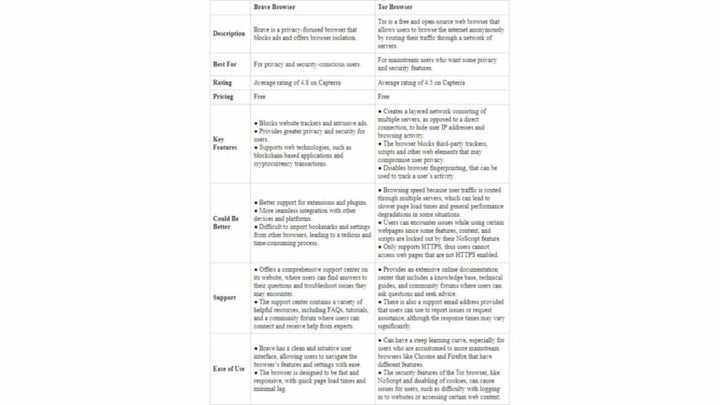
The speed and performance of a browser are essential considerations with implications for browsing experience; not only by determining how fast pages load but also by the capability to handle the features of modern websites.
The next section examines the speed and performance features of the Brave and Tor browsers in greater detail to see how they stack up against each other.
Speed and Performance

Both Brave and Tor offer unique features and benefits, but which one is better in terms of speed and performance?
Brave Browser
Brave is known for its fast browsing speed and intuitive interface. Factors that support fast browsing speed include:
- Engineered to be speedy, with faster load times and page rendering capabilities, especially since it blocks most advertisements and tracking scripts.
- Built on a chromium framework, a platform known for speed and optimized web page rendering capabilities. By removing many of Google Chrome’s tracking features, Brave experiences a boost in speed.
- Blocks ads from third-party trackers and hackers, scripts, and other web elements that slow down page loading times, Brave minimizes the amount of data transfer that occurs during browsing, leading to quicker load times and quicker response times on web pages.
- With a modern, intuitive interface, Brave has been optimized for browsing on older hardware so it can still perform well, even with older hardware configurations.
Tor Browser
Tor prioritizes anonymity and privacy over speed. Here are some key points to consider:
- Since Tor routes data through networks of servers to hide user traffic, the browsing speed can be slower compared to typical mainstream browsers, especially for users with a slow internet connection.
- To further anonymize data, Tor uses multi-layer encryption, leading to higher latency, more time in data transit, and longer loading times for web pages.
- Tor’s performance is heavily limited by its processing power requirements, so users with older hardware may experience more degradation in functionality compared to newer hardware running the same website browser.
- Users on mobile devices may experience slower speeds because of their connection type, making load times and page rendering slower, compared to desktop.
In conclusion, for speed and performance, Brave is the clear winner and the go to browser. With Tor’s focus on privacy and security, it’s a safer option for those who require anonymity and censorship resistance. Ultimately, it comes down to what features are most important to you.
Security and Privacy
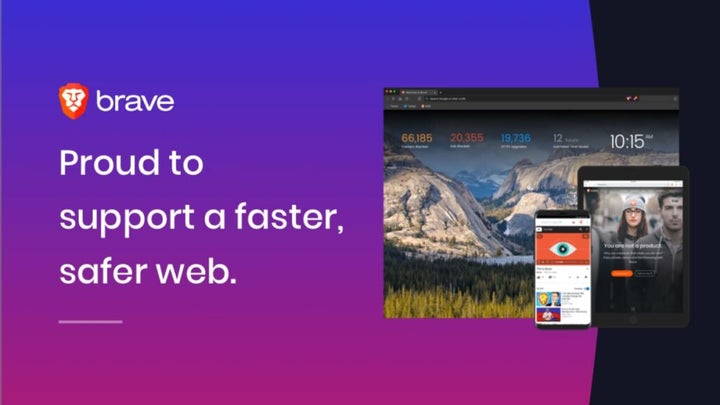
Both Brave and Tor browsers prioritize security and privacy, but they do so in different ways. Here are some key points to consider:
Brave Browser
- Offers blocking of third-party trackers, scripts, and the use of fingerprinting to protect user privacy.
- Includes encrypted HTTP (HTTPS) network connections to prevent man-in-the-middle attacks.
- Has anti-phishing features built-in to prevent users from accessing malicious websites.
- Brave’s shields perform well on blocking trackers, scripts, and fingerprinting, making it a good choice for privacy-focussed users who don’t require complete anonymity.
- Brave’s BAT cryptocurrency rewards system might pose some privacy risks because of the user’s data being shared with publishers and advertisers in exchange for earning tokens.
Tor Browser
- Provides anonymous browsing, which safeguards users from being tracked.
- Secures data transmitted across its network services by routing it via TOR relays, which adds extra layers of encryption for privacy and anonymity.
- Uses different IP addresses and exit nodes to mask user’s online identity and reduces the risk of user tracking.
- Uses NoScript, a built-in feature that blocks potentially harmful scripts and ensures that only trusted scripts can be loaded by the browser.
In summary, both browsers have impressive privacy and security features that are highly useful for different audiences. Brave focuses on stopping third-party tracking, while a key Tor feature specializes in complete anonymity on the web. Choosing between them will depend mainly on the security vulnerability that concerns you and what you want to prioritize.
Performance on Different Devices
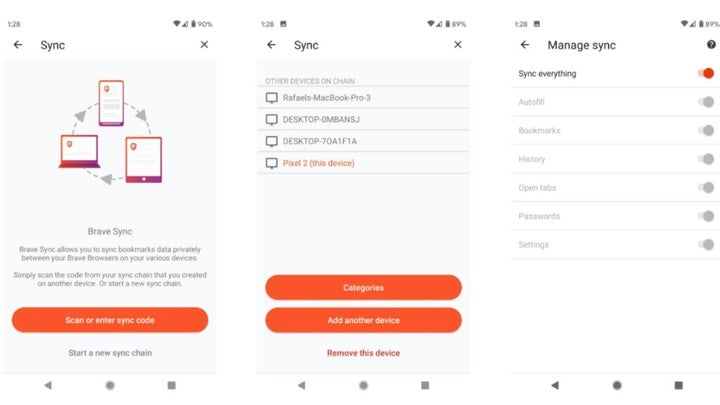
When it comes to performance on different devices, there are a few things to consider. Both browsers are available on desktop and mobile platforms, and both offer private windows and browser isolation.
Here are some key points to consider:
Brave Browser
- Known for its speed and quick load times, running smoothly on various operating systems, for example, Windows, macOS, Linux, Android, and iOS devices.
- Utilizes its “Brave Shields” ad-blocker and anti-tracking features to enhance performance and page load times, making it a strong choice for devices with limited processing power.
- As Brave is a lightweight browser, it runs on older devices without lower resource requirements.
Tor Browser
- Tor’s multi-layer encryption and data routing can impact performance, typically requiring more processing power and resources compared to other browsers.
- Given Tor’s heavier resource requirements, it may run slower on older or less powerful devices.
- Does not place a significant load on the system memory or CPU, and it runs on virtually any device with access to the internet, making it highly adaptable.
In summary, the Brave browser performs better than the Tor browser on most devices, thanks to its unique features that prioritize speed, efficiency, and a smooth browsing experience.
However, users with older or less powerful devices may find Tor to be a better option because of its lower system requirements. Ultimately, opt for a browser that best suits your browsing needs and device capabilities, whether that be speed, security, privacy or a blend of all factors.
Battery Life
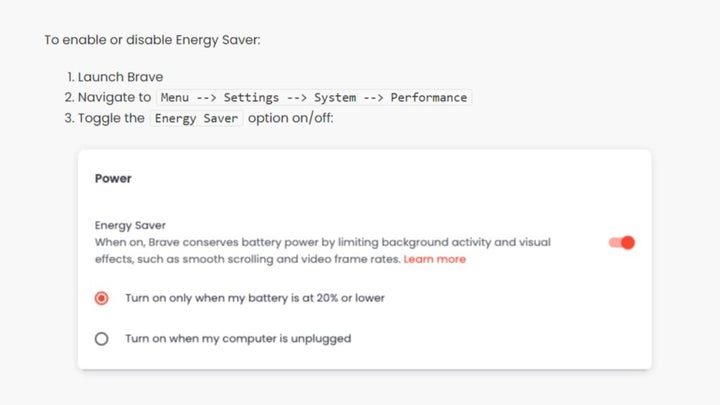
This is a crucial aspect of any web browser, and it’s no different for Brave and Tor. When comparing Brave vs Tor in terms of battery life, there are a few key factors to consider.
Brave Browser
- Designed to be highly efficient, using fewer resources than most mainstream browsers.
- By offering various features, such as ad-blocking and tracker blocking, Brave reduces a device’s battery usage compared to non-optimized traditional browsers that have to load web elements that slow down and increase battery consumption.
- Has a built-in energy-saving mode that improves battery life by stopping background processes, such as video playback and auto-loading of windows or tabs, when the browser is minimized or not in active use.
Tor Browser
- Since Tor relies on multiple layers of encryption and server routing, it requires more processing and networking power to achieve anonymity, which can negatively affect battery life.
- Blocks some web elements such as scripts, ads overloading and videos, which can lead to decreased power consumption compared to traditional browsers, but slower page loads.
- Since the browser may need an internet bandwidth that is steady, any interruption, such as weaker or oscillating internet connectivity, may cause increased battery usage to compensate for slow load or unresponsive web pages in this case.
In summary, Brave has better battery consumption ratings compared to Tor, which usually uses more power through multiple layers of encryption and routing of user data. While Tor blocks certain web elements that can reduce power usage occasionally, its network and encryption heavily limits battery life, such that Brave is the better performing browser for devices on battery mode.
Design of Browsers: How It Impacts Performance and User Experience
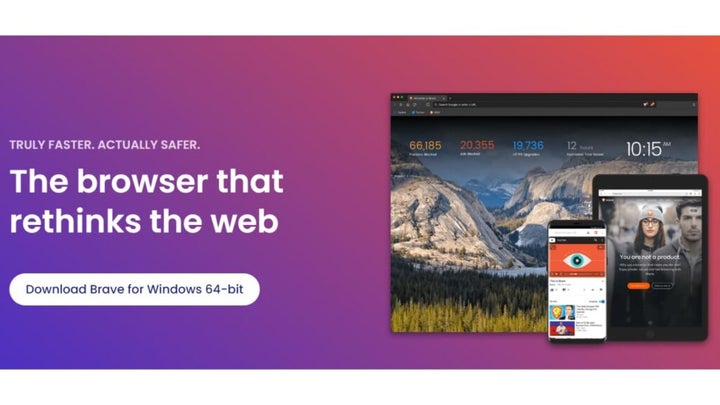
When choosing a default browser, there are a lot of factors to consider, including performance and user experience.
While browsers like Google Chrome offer fast browsing speeds, they also track your internet data and offer little in the way of privacy features.
While both Brave and Tor browsers prioritize user privacy, their design approaches differ significantly, affecting both performance and user experience.
Brave Browser
- Has a clean, minimalist design that emphasizes speed, responsiveness, and ease of use.
- Its default settings block ads and third-party trackers, resulting in a cleaner browsing experience, faster page load times, and lower resource usage.
- Allows users to customize the look and feel of the browser, including setting custom themes and rearranging the toolbar.
- Its customization features are user friendly and simple to navigate.
Tor Browser
- Has a unique design, similar to Firefox browser, that emphasizes privacy, security, and anonymity over aesthetics.
- Its default settings block all JavaScripts and third-party cookies, which can affect some web apps and sites with complex functions.
- Its interface uses colors and graphics to emphasize the anonymity features and alert Tor users when their connection is not protected and/or it detects a leak.
- May not be aesthetically modern or sleek, but it offers both anonymity and privacy in one place.
With regard to the design of the browsers, both Brave and Tor have a unique approach and a clear purpose. Brave is more focused on ease of use and speed, incorporating functionality to make browsing less taxing on the system. Tor is all about anonymity and privacy, which sometimes results in trade-offs for performance and compatibility with modern design trends.
In terms of performance and user experience, Brave edges out Tor because of its more modern interface and lower resource usage.
Is There a Better Alternative?
When choosing a web browser, there are plenty of options available beyond Brave and Tor. Browsers like Google Chrome and Firefox offer reliable performance and familiar interfaces. For those looking for privacy and security features, there are also options such as using a VPN and browser isolation tools.
There are alternative web browsers that have unique features and benefits and they include:
Tempest

- A privacy-oriented browser that focuses on keeping user data and activities more private and secure.
- Uses advanced tracking protection elements and adding ad-blockers and fingerprint lockers, making it harder to track the browser or its users than standard browsers by third-party organizations.
- Comes with built-in VPN support, which can route user traffic through multiple servers, providing a higher degree of security and privacy.
Opera
- A highly customizable browser that offers many features, such as an integrated VPN and ad blocker.
- Includes a built-in messaging platform and email client, allowing users to stay connected and organized while browsing.
- Also features Opera Turbo, which compresses images and files to reduce load times and browsing speeds.
Vivaldi
- Is an innovative browser designed for power users, with a range of customizability options, including mouse gestures, hotkeys, and tab stacking for efficient browsing.
- Highly intuitive and easy to use, with a clean and efficient interface that eliminates a lot of clutter on the screen.
- Includes innovative features like built-in screenshotting and note-taking.
Microsoft Edge
- Based on the Chromium engine, it offers a fast, modern, and clean browsing experience.
- Supports a wide range of extensions and comes with many built-in tools and features such as a PDF reader and native support for Windows.
- Its privacy features include customizable tracking protection, which blocks unwanted or malicious elements on the page.
Mozilla Firefox
- Is an open-source browser that prioritizes user privacy and security, with a range of customizability features that allow users to tailor their browsing experience to their needs.
- Uses a host of security and privacy features, like strict anti-tracking protection, a wide array of extensions to customize user privacy preferences, and frequent security updates.
- Its community-driven development ensures a steady stream of improvements and innovative features that keep the browser up to date with the latest web standards and user needs.
Ultimately, the best browser for you depends on your specific needs and priorities. Whether it’s browsing anonymously, accessing sites censored in your country, or simply browsing the web without being tracked, there are plenty of options available to explore beyond Brave and Tor.
Summary
When choosing between Brave and Tor, it depends on your specific needs and priorities. If you value browser isolation, blocking ads, and a for-profit company model, then Brave may be the better choice for you.
However, if you prioritize anonymity, privacy features, and access to the Tor network, then Tor Browser is the way to go.
Both browsers offer unique features and benefits, such as Brave Rewards and Tor’s onion router, and both prioritize privacy and security. As with any web browser, there are potential security vulnerabilities to be aware of, but both Brave and Tor have multiple layers of protection to keep users safer.
Ultimately, it’s important to weigh the pros and cons and make an informed decision based on your individual needs and priorities. Regardless of which browser you choose, it’s clear that privacy and security features are becoming more important to more people, and you can expect to see continued development and innovation in this space across platforms and devices.
You may also like
 News
NewsThe finale of Stranger Things will be shown in theaters and has already sold more than 1 million tickets
Read more
 News
NewsCreate retro-futuristic reels with Premiere Pro + Firefly
Read more
 News
NewsPluribus’ ending could have been much more bland, but an Apple executive suggested something else
Read more
 News
NewsIf there are no more Avatar movies, James Cameron knows how the story will continue
Read more
 News
NewsApple doesn't want its foldable iPhone to have wrinkles on the screen: is there a solution?
Read more
 News
NewsWe already know who will be the director of the Sleeping Dogs movie
Read more
